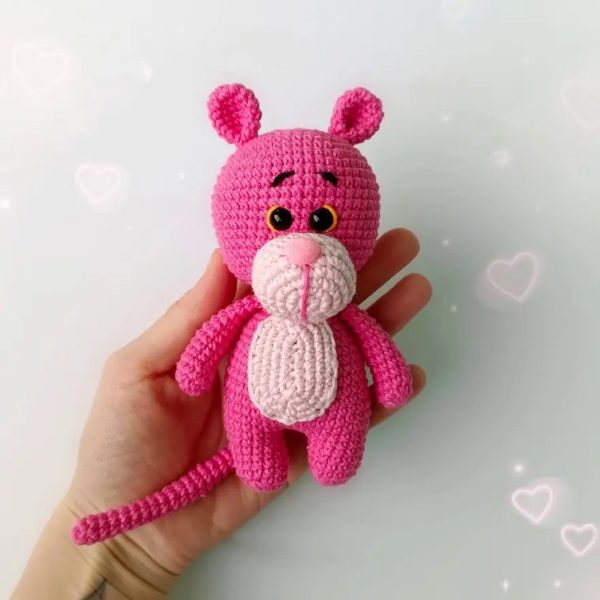The world of amigurumi offers a fun hobby for crochet enthusiasts of all ages and skill levels. However, not all amigurumi projects have the same difficulty level. The difficulty level is determined by the technical requirements, materials used, and the complexity of the crocheting process. So, how are the difficulty levels of amigurumi projects determined? In this article, we’ll explore the factors that influence the difficulty levels of amigurumi projects in detail.
1. What are the Difficulty Levels?
Amigurumi projects are generally classified into three main difficulty levels: Beginner, Intermediate, and Advanced. Each level represents certain technical skills and experience requirements.
a. Beginner Level: These projects are suitable for those who are new to amigurumi. They involve simple shapes, basic stitches, and are often single-piece projects. At this level, projects typically focus on basic techniques such as the magic ring, single crochet, and simple increases and decreases.
b. Intermediate Level: Intermediate projects contain slightly more complex techniques and details. They may involve assembling different parts, color changes, more intricate shapes, and decorative details.
c. Advanced Level: Advanced projects require professional skills and advanced techniques. These projects feature intricate details, multiple parts, complex shapes, and multi-colored patterns. Techniques like creating realistic textures, advanced stitching methods, and precise assembly are hallmarks of advanced projects.
2. Factors Affecting Difficulty Levels
Several factors determine the difficulty level of an amigurumi project. Here are some of these key factors:
a. Techniques Used:
The techniques employed in a project are one of the most significant factors determining its difficulty. Projects that rely on basic techniques are usually beginner level, while more advanced techniques, stitch types, and variations of increases and decreases push projects into intermediate and advanced levels. For example, techniques like bobble stitch, textured stitches, or frequent color changes are commonly found in advanced-level projects.
b. Number of Parts:
The number of parts in a project directly affects its difficulty level. Single-piece projects are generally easier because they don’t require joining or shaping different parts. However, multi-part projects require proper assembly techniques and sewing skills. As the number of parts increases, the complexity and difficulty of the project rise.
c. Size:
The size of amigurumi figures can also influence the difficulty level. Smaller projects usually take less time and material, but working with very small parts can sometimes be more challenging. Projects with tiny details often require advanced skills, while larger projects may demand more patience and careful crochet work.
d. Level of Detail:
The amount of detail in a project also raises its difficulty. For instance, adding clothes, accessories, hair, or facial expressions to toys introduces additional challenges. Projects with simpler details are considered beginner level, while complex and realistic details are typical in advanced-level projects.
e. Materials Used:
The thickness of the yarn and the size of the crochet hook can also add to the complexity of a project. Working with thin yarn requires more precision, while thicker yarn is easier to control. Additionally, some projects may require special accessories (eyes, buttons, fabrics, etc.) that increase the technical difficulty.
3. How to Recognize the Difficulty Level of a Project?
There are a few tips to help you determine the difficulty level of an amigurumi project:
a. Pattern Description: Most amigurumi patterns specify whether they are beginner, intermediate, or advanced. By reading the pattern description carefully, you can assess whether it matches your skill level.
b. Technical Skills: If you are familiar with basic techniques such as increases, decreases, and the magic ring, you can easily handle beginner-level projects. However, if the project includes additional advanced techniques and intricate details, it is likely to be intermediate or advanced.
c. Project Duration: Another way to gauge the difficulty level is by considering how long the project will take. More complex projects often require more time and patience to complete.
4. Tips for Improving Your Skill Level
To gradually increase the difficulty level of your amigurumi projects and improve your skills, consider these tips:
a. Progress Step by Step: Start from the beginner level and gradually transition to intermediate and advanced projects. Be open to learning new techniques and aim to improve with each project.
b. Be Patient: Patience is essential, especially for advanced projects. Complex figures and details may take time, so working without rushing will lead to better results.
c. Follow Guides and Videos: Make use of different resources during your learning process. Online video tutorials and written guides can help you learn new techniques.
Conclusion: Difficulty Levels of Amigurumi Projects
The difficulty levels of amigurumi projects are influenced by several factors, including the techniques used, project size, and level of detail. By considering these factors, you can choose projects that match your skill level and enjoy steady progress in the world of amigurumi. Starting from beginner-level projects and gradually transitioning to more complex and detailed ones keeps the hobby engaging and helps you enhance your skills over time.
